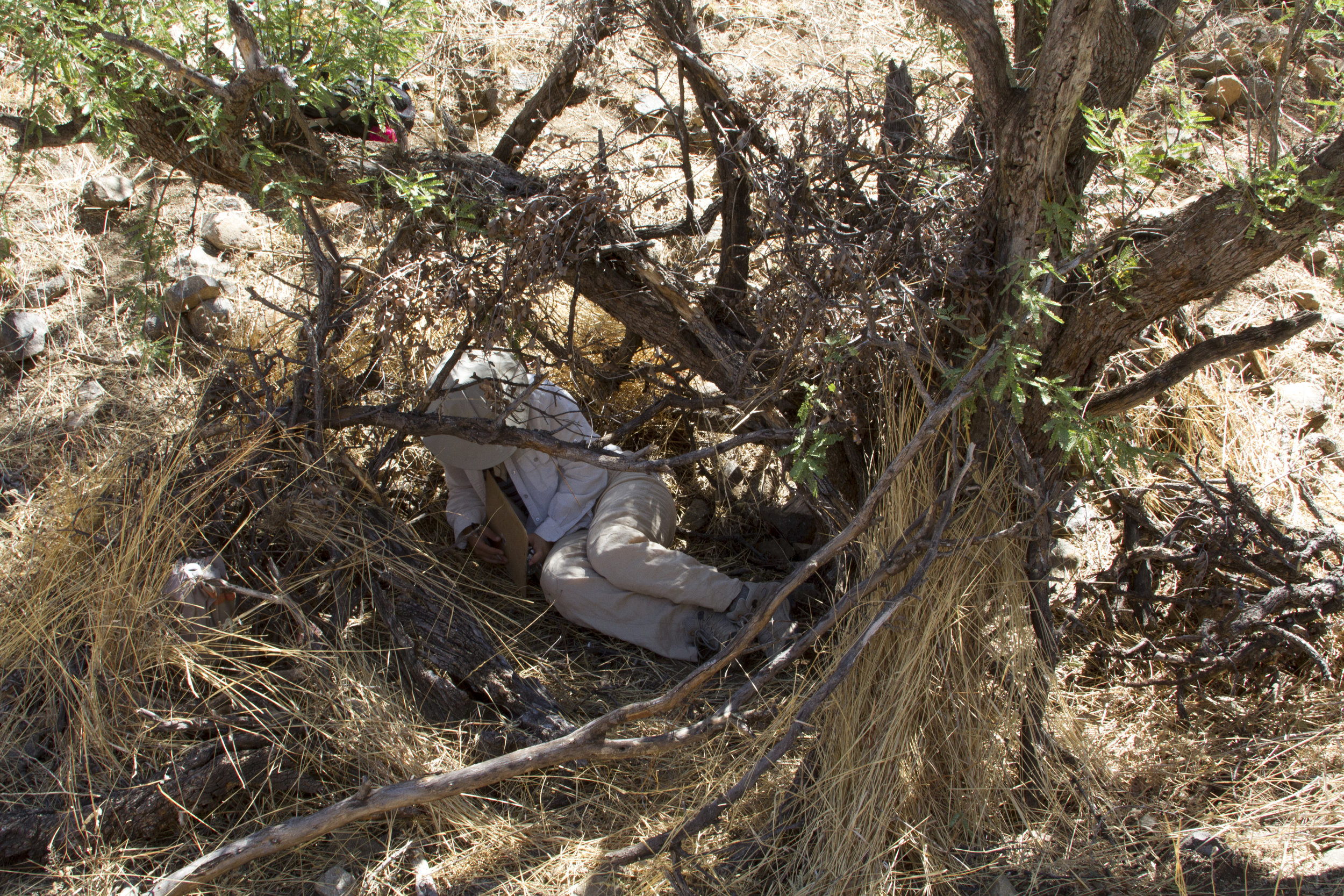Abstract
This dissertation contributes to the discourse of informal and temporary architecture through its investigation of the small structures constructed by unauthorized border-crossers (UBCs) in the U.S.-Mexico borderlands. Scholarship tends to frame self-built environments as a cultural phenomenon (as traditional vernacular architecture), a by-product or response to capitalism (as marginal spaces of resistance such as ‘slums’), or an artistic endeavor (such as pop-up architecture or guerilla urbanism). I argue that UBC structures, in their response to extreme situations, constitute illustrative microcosms through which we can view the larger relationship among architecture, politics, experience, and environment.
During the early 2010s, the Tucson sector of the U.S.-Mexico border was the most highly trafficked area with UBC annual apprehension rates of around 120,000. This condition was a result of late 1990’s policy initiatives legislated by the United States government that fortified urban points of entry and strategically funneled UBCs into brutal desert terrain. Now, to cross the border, UBCs have to walk an average of three to five days through the Sonoran Desert, facing violence, harmful plants and animals, relentless terrain and climate, as well as Border Patrol surveillance. During their journey, some UBCs build small structures out of available materials such as mesquite branches, grasses, and rocks.
This research project takes these seemingly simple structures and identifies three ways in which they negotiate the complexity of the border-crossing context. First, I identity the ways in which social roles and rules impact the siting and form of the architecture. While patterns and hierarchies exist in the desert, the structures underscore ambiguity in the landscape and the ways in which people must adapt their identities, bend rules, and reorder priorities. Second, I highlight the extent to which the structures provide physical and existential shelter from the traumatic context of border-crossing, revealing that while architecture can provide some respite, complete refuge is impossible to achieve and thus notions of place and dwelling are enmeshed with struggle and survival. Finally, I identify the modes through which UBC architecture resists the militarized landscape, engaging direct strategies such as counter-surveillance and cloaking as well as indirect tactics of persisting and haunting what is intended to be a no man’s land.
To investigate these dynamics, I completed two seasons of fieldwork in 2012 and 2013 on both sides of the U.S.-Mexico border. Incorporating inter-disciplinary methods from architecture, archaeology, and anthropology, I gathered and analyzed over 30 exemplars of border-crosser architecture, several hundred of their associated artifacts (such as discarded clothing and food containers), and over 40 in-depth interviews with UBCs. This body of findings is theoretically framed by critical phenomenology in order to weave together the intersubjective relationship between architecture, political and natural landscapes, and the everyday experiences and affect of border-crossers. The aim of this work to bring UBC structures out of the realm of anonymous cultural artifact or thoughtless construction and instead to reveal the intricacy, intimacy, and individuality of each structure as it responds to and shapes the border-crossing process.
